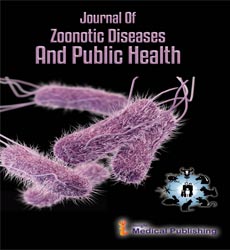PulseNet international: Integrating pulsed-field gel electrophoresis and whole genome sequencing for bacterial disease surveillance and outbreak investigations by means of novel image analysis, bioinformatics database and simulation algorithms
Abstract
Food-borne pathogenic bacteria make use of contemporary transportation in a global scale. A local outbreak is able to invade and propagate across several countries carried by infected individuals or exported products. For tracking such pathogens. DNA-based surveillance of bacterial diseases has been using pulsed field gel electrophoresis (PFGE) since 1996. Currently, the international surveillance network (PulseNet international) includes 83 countries around the world. PulseNet international is turning toward whole genome sequencing(WGS). ATCGs of WGS are compared using several DNA sequence alignment methods. While patterns of horizontal lines of PFGE profiles are being compared based on relative positioning of bands within a range of tolerance. The simple logic behind PFGE is that number and distribution of recognition sequence of the restriction enzyme used determine the final profile. While whole chromosome and plasmid DNA sequences revealed by WGS can also be digested in-silico, resulting in digestion models (DMs). It may seem possible to link PFGE to WGS data. In this presentation, the author describes three novel algorithms those collectively bridge the gap between PFGE and WGS bacterial typing. The first one is an image analysis algorithm that reveal number of DNA fragments represented by each PFGE band. The second is GelToWGS database algorithm; this database is designed to compare PFGE analysis results of the first algorithm to in-silico digested WGS data. The last algorithm simulates PFGE profiles from DMs to obtain the same results expected from image analysis algorithm described earlier. It evaluates reliability of both; the first and second algorithms. The author will also discuss a new approach for qualitative analysis of PFGE and WGS that suggests determining serotypes and pulsotypes of isolated based on common DNA fragments across these categories as shown by GelToWGS database results.
What will audience learn from your presentation?
- This presentation is intended for stakeholders and researchers in public health laboratories to consider linking their results for better evaluation of trending outbreaks of food-borne diseases. By using described image analysis and database, they may discover hidden relationships between previously reported outbreaks.
- Wet-lab evaluation of conclusions returned by GelToWGS database and simulation algorithms described opens the door for researchers to confirm or criticize all presented work in thispresentation.
- Expanding the database to include newly sequenced genomes in timely fashion is crucial.Building a larger database for this purpose is important. Investors in Bioinformatics field are welcome to upgrade the database.
- Presented approaches may provide better alternatives to currently adopted software used for PFGE image analysis. It solves problems of DNA fragments co-migration in PFGE hence, improves accuracy of PFGE typing.
Open Access Journals
- Aquaculture & Veterinary Science
- Chemistry & Chemical Sciences
- Clinical Sciences
- Engineering
- General Science
- Genetics & Molecular Biology
- Health Care & Nursing
- Immunology & Microbiology
- Materials Science
- Mathematics & Physics
- Medical Sciences
- Neurology & Psychiatry
- Oncology & Cancer Science
- Pharmaceutical Sciences
